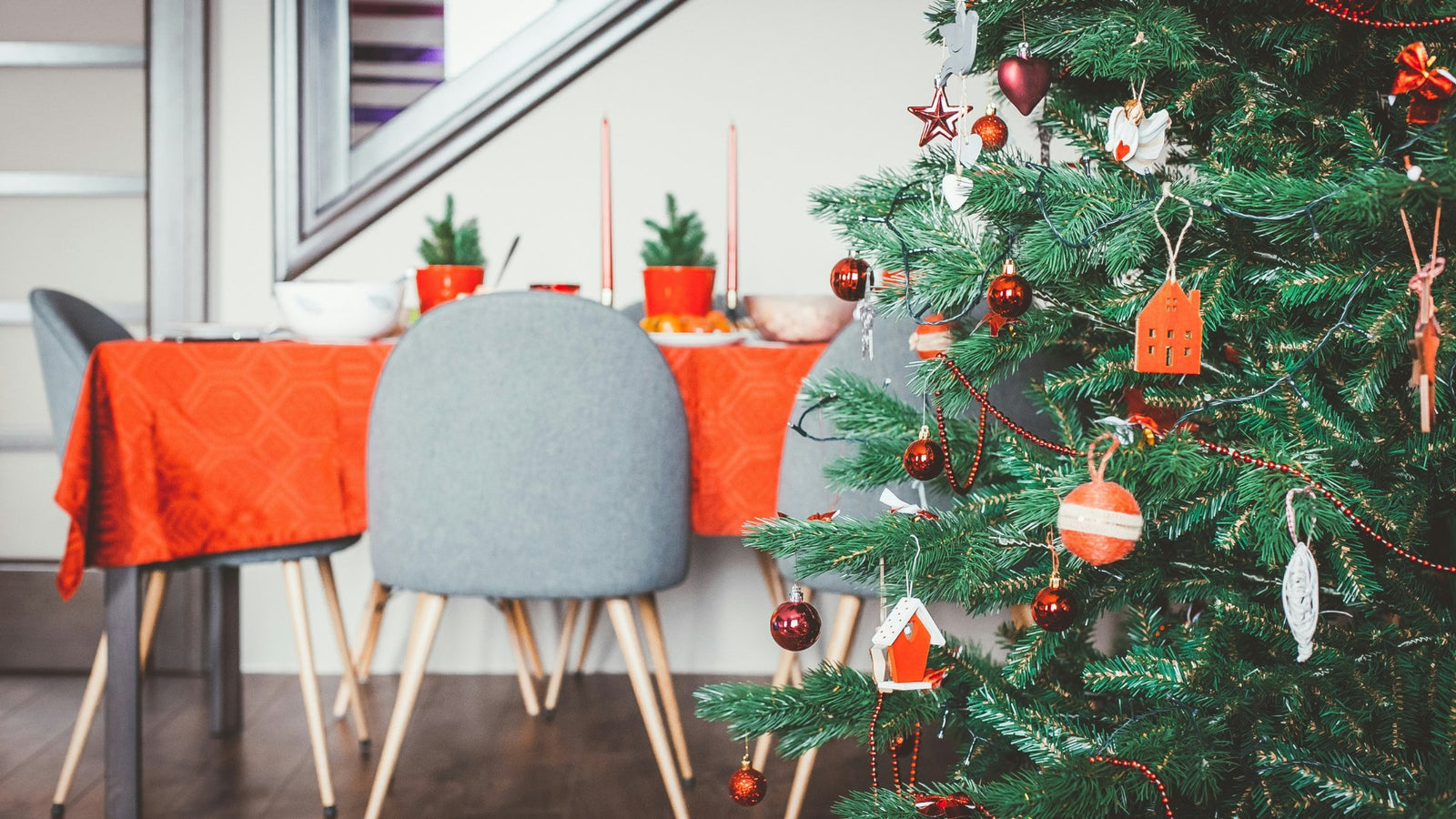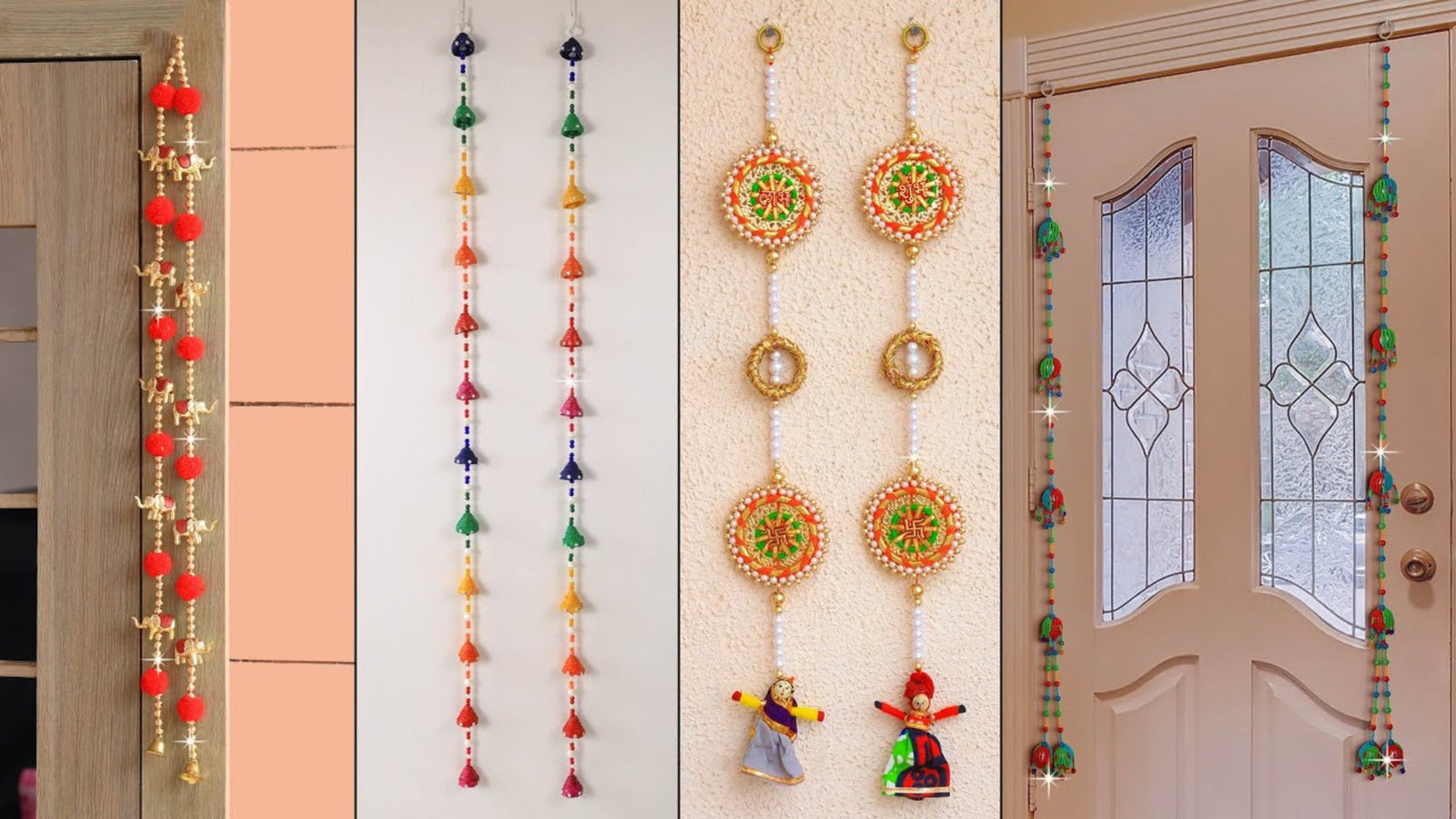Your Cart is Empty
🎁BUY 2, GET 1 FREE + FREE WORLDWIDE SHIPPING 🚚
🎁BUY 2, GET 1 FREE + FREE WORLDWIDE SHIPPING 🚚
How To Decorate A Christmas Tree ?
November 21, 2024 14 min read

Decorating a Christmas tree is more than merely a holiday tradition; it presents an opportunity to express creativity and infuse festive cheer into the home. Whether one favors the classic appeal of a natural tree or the practicality of an artificial option, the process can be both enjoyable and fulfilling. From selecting the ideal tree to applying the final embellishments, this guide will provide a comprehensive overview of each step, ensuring that your tree serves as a stunning centerpiece for your celebrations. Prepare to transform your space into a winter wonderland.
Step 1: Choose the Right Tree
.jpg_00.jpeg)
Selecting the appropriate tree is a pivotal initial step in the Christmas decorating process, as it establishes the foundation for the festive design ideas and sets the tone for the entire holiday season.
Whether one chooses a traditional Douglas fir, renowned for its lush branches, or a sophisticated artificial tree from Balsam Hill, which provides convenience and durability, this choice can profoundly impact the overall appearance and ambiance of the Christmas decor, infusing holiday cheer into the home.
Furthermore, this decision reflects an individual’s personal style, whether it leans towards a cozy, vintage aesthetic or a modern interpretation that embodies the spirit of the holiday season, incorporating unique motifs and accents.
What Type of Tree Should You Get for Your Christmas Decorations?
When considering the selection of a Christmas tree, it is important to evaluate the advantages of real trees compared to artificial options, as each presents distinct benefits and aesthetic qualities that can enhance your Christmas decorating ideas.
Both options offer varied experiences and can evoke different sentiments during the holiday season. Many individuals value the tradition of selecting a live tree, such as the widely favored Douglas fir, renowned for its lush appearance and pleasing fragrance, which greatly enhances the festive ambiance in any home. Conversely, some may opt for artificial trees due to their convenience and reusability, allowing homeowners to invest in an attractive tree that can endure for several years without the requirement for seasonal maintenance.
A closer examination of the pros and cons is as follows:
- Real Trees: Authentic scent, unique shapes, and eco-friendly when sourced sustainably.
- Artificial Trees: Cost-effective in the long term, no shedding needles, and available in various styles.
Ultimately, the choice of tree has a significant impact on holiday décor, influencing everything from ornaments to the overall theme and design of the celebrations.
Real vs. Artificial Trees
The discussion surrounding the choice between real and artificial Christmas trees often centers on individual preferences, as each option possesses unique characteristics that can enhance one's holiday decor and overall experience, whether it be a simple, traditional theme or a modern twist.
When evaluating these alternatives, it is essential to consider not only the aesthetic appeal but also the maintenance requirements and the broader environmental implications. Real trees provide a delightful fragrance that can evoke feelings of nostalgia and warmth associated with family traditions. Conversely, artificial trees, especially those produced by reputable brands such as Balsam Hill, offer convenience and durability, requiring minimal upkeep and allowing for reuse year after year.
- Aroma: Real trees emit a signature scent that is often cherished.
- Durability: Artificial trees can last a lifetime with proper care.
- Environmental Impact: It is important to consider sourcing local real trees in contrast to the plastic nature of artificial options, in line with sustainable decorating practices.
Ultimately, the decision regarding which type of tree aligns with one's desired holiday atmosphere should also factor in lifestyle preferences, a commitment to sustainability, and any spatial constraints, allowing for a festive and cheerful home.
Step 2: Gather Your Supplies
After selecting the ideal Christmas tree, the next step is to collect the necessary supplies. This will facilitate the creation of a festive and personalized decorating experience that embodies your family's distinct style and holiday spirit, while adding a touch of DIY charm.
What You Will Need
To achieve the desired aesthetic for your Christmas tree, it is essential to gather a variety of supplies, including ornaments, lights, ribbons, garlands, and tinsel, each of which plays a vital role in enhancing the overall festive appeal and holiday decorations.
When selecting these items, the choice of ornaments is particularly important. It is advisable to incorporate a range of options such as glass baubles, handmade crafts, and thematic figures that reflect your personal style. The lighting selection should also be given careful consideration; opting for warm white or vibrant colored LEDs can significantly contribute to the desired atmosphere.
- For a traditional appearance, a classic red and green theme is recommended, embracing the warmth and nostalgia of the season.
- If a modern aesthetic aligns more closely with your preferences, icy blue and silver are excellent alternatives.
Ribbons in various textures, such as satin or burlap, can add depth, while garlands embellished with pinecones or berries serve to complement the tree beautifully, adding a unique flourish and twigs for a rustic touch.
Ultimately, the key to a stunning tree lies in selecting items that harmonize with your overall decorating theme, ensuring that every detail contributes to a cohesive and festive ambiance, enhanced by the sparkle and charm of well-placed accents.
Step 3: Fluff and Shape the Tree
.jpg_01.jpeg)
Fluffing and shaping the Christmas tree is a crucial step in the decorating process, as it contributes to a full and natural appearance that enhances the beauty of the selected ornaments, lights, and Christmas decorations.
The initial task of fluffing the branches involves gently bending and spreading each branch from its base to the tips. This technique not only improves the overall shape but also ensures that the tree presents a lively and inviting appearance, adding fullness and contrast to the decorating look.
Here are some practical tips to consider:
- Start from the Bottom: Begin fluffing at the lower branches and work your way up to maintain balance and achieve a cohesive arrangement.
- Layering Technique: Alternate the direction of the branches, placing some upward and others downward to enhance depth.
- Spacing: Avoid clumping branches together; distribute them evenly to achieve a harmonious look.
- Step Back Often: Periodically step back to view the tree from different angles, ensuring a balanced and full shape.
By implementing these strategies, one can maximize the aesthetic appeal of the tree, transforming it into a stunning centerpiece for holiday festivities, adorned with the right accents and themes.
Step 4: Add Lights
Incorporating lights onto a Christmas tree is an essential practice that not only enhances the aesthetic of holiday decorations but also cultivates a warm and joyful ambiance, reflecting the true spirit of the season and its cheerful holiday cheer.
What Type of Lights Should You Use?
Choosing the appropriate type of lighting for a Christmas tree is crucial for achieving the desired ambiance, with options ranging from traditional incandescent bulbs to contemporary LED lights that provide versatility and energy efficiency, enhancing both the modern and vintage decorating ideas.
When selecting the optimal lighting, it is important to consider not only the brightness and color but also the overall style that these choices can impart to the decor. Traditional incandescent lights, known for their warm glow, can create a nostalgic atmosphere, making them well-suited for a cozy, classic appearance. However, they are less energy-efficient and tend to generate more heat.
In contrast, LED lights are available in a variety of vibrant colors and are recognized for their durability and low energy consumption, rendering them a more sustainable option.
The following is a brief overview of different lighting options, offering diverse themes and styles:
- Incandescent Lights: Emit a warm glow, are energy-intensive, and are often used for traditional styles.
- LED Lights: Energy-efficient, long-lasting, and available in various color options.
- Colored Bulbs: Add vibrancy and can create a playful ambiance, perfect for a unique and cheerful theme.
- White Lights: Timeless and elegant, frequently employed for a sophisticated touch.
Ultimately, the selection of appropriate lighting can significantly transform the appearance of the tree and enhance the festive spirit throughout the home, adding sparkle and warmth to the decorations.
How Many Lights Do You Need?
Determining the appropriate number of lights for a Christmas tree is crucial for achieving an aesthetically pleasing appearance. General guidelines recommend using approximately 100 lights per vertical foot of tree height to create a beautifully illuminated effect, contributing to an overall cheerful and festive look.
When planning the ideal lighting setup, several factors must be considered, as they can significantly influence both the visual appeal and effectiveness of the lighting.
- Tree Height: Taller trees require more lights to ensure even illumination throughout all layers. For example, a 7-foot tree typically benefits from around 700 lights, while a 9-foot tree may require up to 900 lights.
- Tree Fullness: Trees that are fuller and bushier may need additional lighting to achieve a comprehensive glow.
- Personal Preferences: Individual preferences play a significant role, as some individuals favor a vibrant display, while others may prefer a more understated elegance. Adjusting the number of lights to align with personal taste can enhance the overall aesthetic appeal of the tree.
By thoughtfully considering these variables, individuals can elevate their decorative efforts and create a stunning focal point in their homes during the festive season.
How to String Lights on a Christmas Tree
Stringing lights on a Christmas tree is an art that necessitates meticulous attention to detail, ensuring that each branch is uniformly illuminated to create an aesthetically pleasing and welcoming display.
To achieve this, it is essential to consider several important factors that enhance the overall visual effect. Begin by gathering all necessary materials, ensuring there are sufficient lights to adequately cover both the height and fullness of the tree.
- Choose your light style: Select between classic white, colored, or whimsical designs based on the chosen theme.
- Plan your layout: Before positioning the lights, envision a pattern that flows seamlessly from the trunk outward to the tips. This approach will not only add depth but also draw the viewer's attention to the entire tree.
- Spacing matters: Maintain even spacing, typically 6 to 8 inches apart, to prevent clumping and ensure uniform brightness.
- Avoid pitfalls: Exercise caution to avoid over-tightening the wires, as this can damage the tree's branches. Additionally, ensure that the lights are turned off while being installed to prevent any electrical issues.
By adhering to these guidelines, one can create a beautifully illuminated Christmas tree that serves as the centerpiece of holiday decor.
Step 5: Hang Ornaments
.jpg_10.jpeg)
Hanging ornaments is a highly enjoyable aspect of the Christmas tree decorating process, as it provides an opportunity to showcase individual style and family memories through a thoughtfully curated selection of decorations.
What Types of Ornaments Should You Use?
Selecting the appropriate types of ornaments for a Christmas tree can significantly enhance its ability to reflect the family's personality, with options ranging from traditional glass baubles to distinctive homemade treasures.
When considering ornament choices, the diversity of styles available can greatly contribute to the festive atmosphere. Traditional favorites, such as shimmering tinsel and classic red-and-green ornaments, evoke a sense of nostalgia, connecting families to cherished memories.
Conversely, modern innovations, including geometric shapes and eco-friendly materials, provide a contemporary twist that appeals to younger generations and environmentally conscious decorators. For those with a creative inclination, DIY options offer a personal touch; this may include hand-painted designs or natural elements such as pinecones and dried oranges.
Each type of ornament subtly influences the overall decorating scheme, ensuring that every tree conveys a unique narrative.
- Traditional styles evoke nostalgia and warmth.
- Modern designs can reflect current trends and aesthetics.
- DIY ornaments allow for personalization and creativity.
Embracing this variety can facilitate the creation of a delightful holiday theme that resonates with all family members.
How to Hang Ornaments
Understanding the proper technique for hanging ornaments on a Christmas tree is essential for achieving a balanced and visually appealing arrangement that enhances the overall holiday decor.
To create a stunning display, it is imperative to consider spacing, layering, and placement strategies during the decorating process. First, ensure that ornaments are evenly distributed across the branches, avoiding clustering in any one area. This technique promotes harmony and visual balance.
Layering is equally important; varying the size and shape of the ornaments is advisable, with larger ornaments positioned deeper within the tree and smaller pieces placed toward the front. The following tips may be beneficial:
- Begin with a base of larger ornaments to establish a structural framework.
- Incorporate medium-sized ornaments for added depth and texture.
- Conclude with smaller, delicate pieces to introduce intricate detail.
The selected theme can serve as a guiding principle for the arrangement. Whether one chooses a traditional, rustic, or whimsical style, harmonizing colors and materials throughout the ornaments will create a cohesive appearance. Additionally, mixing matte, shiny, and glittery finishes can enhance visual interest and add an element of elegance to the holiday setup.
Step 6: Add a Tree Topper
Incorporating a tree topper is the final touch that completes a Christmas tree, functioning as a focal point that enhances the overall festive design while also reflecting the family's distinctive holiday style.
What Type of Tree Topper Should You Use?
Selecting the appropriate tree topper for a Christmas tree is critical, as it enhances the overall aesthetic and can vary from traditional stars and angels to contemporary, whimsical designs.
Beyond mere visual appeal, the selected tree topper can significantly impact the ambiance of the room, effectively transforming it into a warm and inviting holiday setting. When choosing a tree topper, it is essential to consider both its material and style, as these components can either harmonize or conflict with the rest of the holiday decorations.
Some popular materials include:
- Metal: Provides a sleek, modern touch.
- Glass: Imparts an elegant, vintage charm.
- Fabric: Contributes warmth with handcrafted elements.
To achieve a cohesive theme, it is important to ensure that the color palette of the tree topper complements the ornaments and lights on the tree. For example, if the tree is adorned with warm white lights and gold ornaments, a golden star or angel would be an optimal selection.
Additionally, balancing the size of the topper with the height of the tree is essential for a well-proportioned appearance.
How to Place the Tree Topper
.jpg_11.jpeg)
Properly positioning the tree topper on a Christmas tree is essential for achieving a polished and complete appearance. This ensures that the topper is both secure and visually harmonious with the rest of the decorations.
To assist in this festive task, it is important to consider the size and style of the topper in relation to the overall height and theme of the tree. The following step-by-step guide may be helpful:
- Choose the Right Topper: Ensure that the tree topper complements the existing decorations. It should enhance the overall aesthetic rather than create a visual discord.
- Prepare the Area: Before ascending, clear the surrounding space of any ornaments or decorations that may obstruct a safe placement.
- Safely Ascend: Utilize a sturdy step ladder, ensuring it is positioned on a flat surface. Avoid stretching too far; it is advisable to descend and reposition the ladder if necessary.
- Secure the Topper: Once the topper is in position, securely attach it using fishing wire or a decorative ribbon to prevent it from tipping or falling during the holiday season.
- Final Adjustments: Step back and evaluate the arrangement. Ensure that the topper appears balanced with the rest of the decorations.
By adhering to these steps, one can achieve a beautifully decorated tree that is both visually stunning and safe for holiday celebrations.
Step 7: Add Finishing Touches
Applying the final enhancements to your Christmas tree is an excellent method to unify your decorative concepts, ultimately transforming the tree into a striking focal point that emanates holiday cheer throughout your home.
Garlands and Ribbons
Garlands and ribbons serve as versatile finishing touches that can add elegance and character to a Christmas tree, allowing for the expression of a unique decorating style.
When selecting the ideal garlands, there is a wide array of options available—ranging from natural elements such as evergreen branches and pinecones to decorative accents like sparkling beads and popcorn strings. These components can establish a foundation upon which the tree's beauty is highlighted. Ribbons, available in diverse styles from luxurious satin to whimsical burlap, offer flexibility in draping techniques and bows, significantly enhancing visual appeal.
- Layering textures: Combining different ribbon materials and tails can create a rich tapestry that captures attention.
- Incorporating colors: Selecting complementary colors elevates the overall aesthetic, allowing the tree to resonate with the festive spirit.
- Creating depth: Strategically placing garlands and ribbons at varying heights can produce a sense of depth and dimension that draws admiration.
Ultimately, the thoughtful integration of these elements not only showcases individual creativity but also enhances the seasonal joy that a well-decorated tree embodies.
Tree Skirt
A tree skirt serves both as a decorative foundation for your Christmas tree and as a functional element that enhances the overall aesthetic, providing a cozy touch to your holiday decor. Inspired by designers like Beata Heuman and Kate Lester, selecting the right tree skirt is an art form.
Selecting the appropriate tree skirt can profoundly impact your festive arrangement, creating a harmonious balance between your tree and surrounding decorations. Whether you choose traditional fabrics or more contemporary materials, the right selection will elevate the ambiance of your living space.
When selecting a tree skirt, whether for a classic or coastal theme, consider the following key aspects:
- Material: Options such as plush velvets, soft cottons, or shimmering silks each contribute distinctively to the visual appeal.
- Style: Whether opting for rustic and vintage designs or contemporary and chic aesthetics, the skirt should reflect your personal style.
- Color: Coordinating or contrasting colors can enhance the overall design, drawing the eye downward and accentuating the beauty of your ornaments and wrapped gifts.
Ultimately, a thoughtfully chosen tree skirt transforms the area beneath the tree into a warm and inviting space, making your holiday gatherings even more special, akin to a scene from your favorite Christmas movies.
Conclusion
Decorating a Christmas tree is a cherished tradition that unites families, fostering creative expression and the celebration of the holiday spirit through thoughtfully curated Christmas decor ideas and personal touches.
As families engage in this joyful activity, they often reflect on the shared memories associated with each ornament and light. From adorning the tree with treasured family heirlooms to selecting a cohesive color scheme that aligns with their unique style, the process serves as a canvas for storytelling. Whether incorporating a sense of nostalgia with a Charlie Brown tree or going all out with Sams Club finds, it is advisable to incorporate elements that highlight distinctive family traditions.
- Gathering Together: Encourage family members to participate, ensuring that everyone has the opportunity to contribute their ideas and preferences.
- Custom Ornaments: Create personalized decorations that commemorate milestones and shared experiences.
- Thematic Approach: Select a theme that captures the essence of your family’s personality or interests, whether it be nature-inspired, traditional, or modern.
Ultimately, the Christmas tree represents more than mere decoration; it embodies warmth, togetherness, and the celebration of enduring family traditions. Whether it’s a DIY project or an artwork-worthy display, the tree reflects the spirit of Christmas.
Frequently Asked Questions
How do I choose the right Christmas tree for decorating?
When selecting a Christmas tree, consider popular options like the Douglas fir or a pre-lit option from Balsam Hill.
To decorate a Christmas tree, you first need to select the perfect tree. Make sure to measure the height and width of your space before purchasing, and consider the type of tree you want (real or artificial). Also, check for any damaged limbs or needles before making your final decision.
What decorations should I use for my Christmas tree?
Consider incorporating unique items like tappers and custom ornaments for added personality.
The options for decorating a Christmas tree are endless, but some popular choices include lights, garlands, ornaments, picks, and a tree topper. You can also add personal touches like homemade decorations or family heirlooms to make it unique. Consider inspiration from House Beautiful or designers like Melanie Lissack and Nicole Salceda.
How many lights do I need for my Christmas tree?
A good rule of thumb is to use 100 lights per vertical foot of your tree. So, for a 6-foot tree, you would need 600 lights. However, this can vary depending on personal preference and the size of your ornaments, and whether you're aiming for a minimalist or a more filled design.
What is the best way to string lights on a Christmas tree?
Start by plugging in your lights and checking for any damaged bulbs. Then, begin at the base of the tree and wrap the lights around the trunk in a spiral motion, working your way up to the top. Make sure to evenly space the lights and tuck any excess cords into the branches. This method is ideal for both real and artificial trees and will ensure your artwork matches the festive ambiance.
Should I put my tree topper on before or after decorating the tree?
It is best to put your tree topper on before adding any other decorations. This will make it easier to center and secure the topper without disrupting any ornaments or lights.
How can I make my Christmas tree look fuller?
If you want to achieve a professionally styled tree, consider using tappers for a modern touch, much like those seen in designs by Matthew Bees or Jess Weeth.
If you have a sparse or artificial tree, you can use garlands or ribbon to fill in any gaps and add dimension. You can also use multiple strands of lights or opt for a pre-lit tree to create a fuller appearance. Transform even a janky tree into a festive masterpiece with the right Christmas decorations and DIY strategies.



